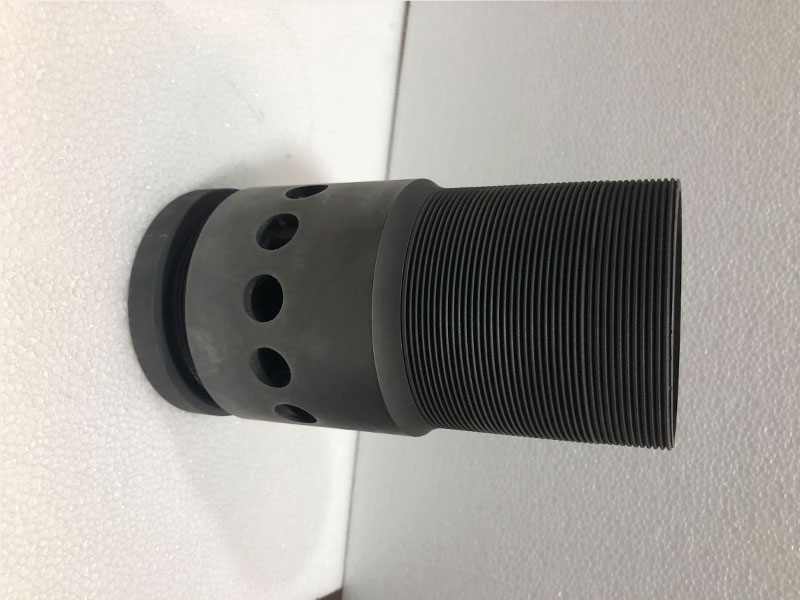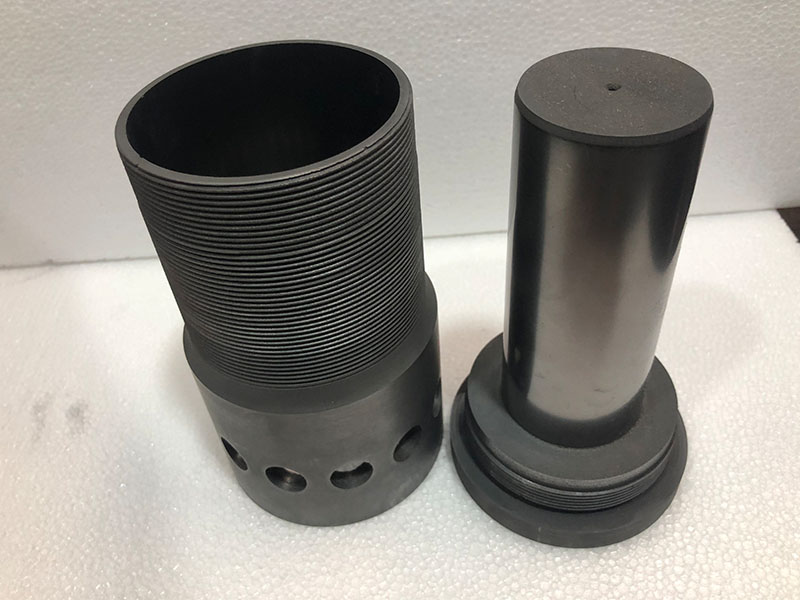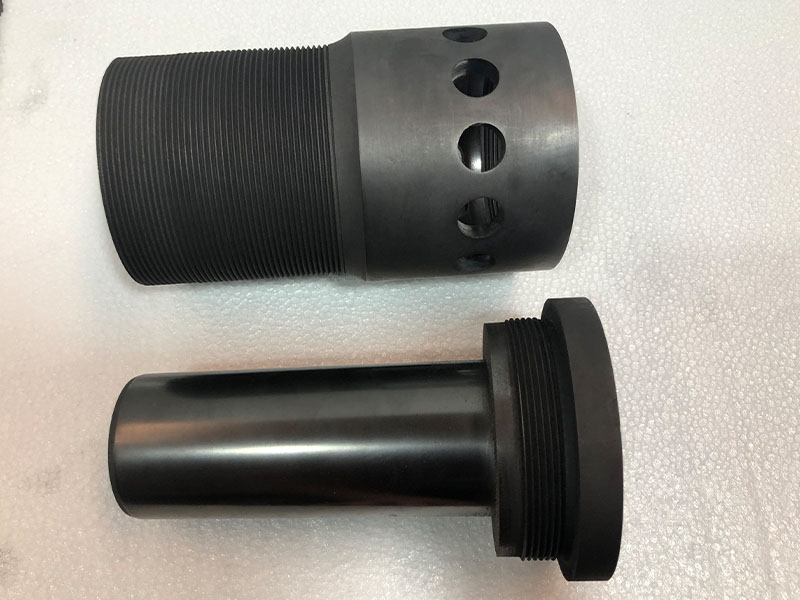Products
Graphite continuous casting die is the most common type of graphite mold used in the casting industry for producing continuous casting slabs. It takes the most widely used graphite as materials as graphite does not react with casting metals and will not affect the quality of the metal castings. Its low thermal expansion coefficient helps prevent the deformation of the mold shape.
In the continuous casting process, the mold must withstand high temperatures and high pressures. The high temperature oxidation resistance of graphite molds can effectively protect them from oxidation and corrosion. Besides, graphite itself has good lubricity, which can reduce the friction between the mold and the casting material, and effectively prevent adhesion between the mold and the casting material, making the casting process smoother and more efficient.



1、Low wettability. To prevent adhesion and breakage of the castings removed from the mold, it requires that the material has poor adhesion to the solidified metal. This is achieved by low wettability of the liquid metal to the mold. Graphite is not wetted by most molten non-ferrous metals and alloys.
2、High thermal conductivity. The heat released during the cooling and solidification of the casting metal is discharged from the mold. The magnitude of the heat transmitted through the mold per unit time determines the solidification and pulling (extrusion) speed of the casting. The higher the thermal conductivity of the mold material, the faster the heat dissipation rate.
3、Low coefficient of thermal expansion. Casting molds are heated internally due to the entry of molten metal fluid and cooled externally by using a water-cooled copper jacket (or directly cooled with water), resulting in an extremely uneven temperature distribution throughout the mold. The low thermal expansion of the graphite material helps prevent deformation of the mold shape and ensures the geometry of the casting.
4、High thermal shock resistance. Due to its high thermal conductivity, low coefficient of thermal expansion , low elastic modulus (1500 ksi / 10.3 GPa), and relatively high flexural strength (7500 psi / 52 MPa), graphite has excellent thermal shock resistance.
5、Self-lubrication. Graphite is a solid lubricant. The low friction between the mold surface and the solidified metal ensures smooth extraction (removal) of the casting without cracking, and minimizes the thickness of defective peripheral surface. The specific layered crystal structure of graphite determines its self-lubricating performance, and can provide low friction without additional oil lubrication.
6、Good mechanical strength. Compared with other materials, the mechanical strength (tensile strength, compressive strength, flexural strength) of graphite increases as temperature rises.
7、Good machinability. Graphite is easy to machine. Complex shaped molds with precise tolerances can be obtained by milling, turning, sawing, grinding, and surface finishing. The precise machining of the inner surface of the mold (grinding or polishing) is important for reducing material wettability and friction. Good surface quality ensures minimal clearance between the mold and water-cooled jacket, enabling better heat transfer.
If you're interested in our products or have any questions, please kindly describe your requirement in detail. Our professional team will reply to you as soon as possible.
Please feel FREE to contact us!